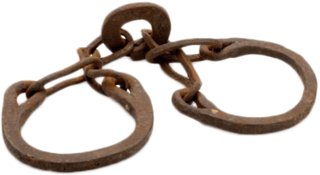 W
WMarie-Josèphe dite Angélique was the name given by her last owners to a Portuguese-born black slave in New France. She was tried and convicted of setting fire to her owner's home, burning much of what is now referred to as Old Montreal. It had been generally accepted that Angélique was guilty, but it has recently been argued that she was innocent of the crime and was convicted more on the basis of her reputation as a rebellious runaway slave than on the basis of factual evidence. A competing theory is that she was guilty of the crime but was acting in rebellion against slavery. No consensus has been reached by historians regarding Angélique's actual guilt or innocence.
 W
WJared Maurice Arter was a former slave, who was a writer, Christian missionary, and academic.
 W
WMahommah Gardo Baquaqua was a former slave, native of Zooggoo, West Africa, a tributary kingdom of Bergoo kingdom. He was literate in Arabic at the time of his capture, and recited a prayer in Arabic before an audience at New York Central College, where he studied from 1849–1853. He worked in Brazil as a captive; however, he escaped and fled to New York in 1847, assuring his freedom. He wrote a biography, published by American abolitionist Samuel Moore in 1854. His report is the only known document about the slave trade written by a former Brazilian slave.
 W
WHenry Walton Bibb was an American author and abolitionist who was born a slave. After escaping from slavery to Canada, he founded an abolitionist newspaper, The Voice of the Fugitive. He returned to the US and lectured against slavery.
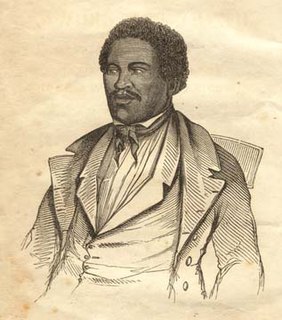 W
WHenry Box Brown was a 19th-century Virginia slave who escaped to freedom at the age of 33 by arranging to have himself mailed in a wooden crate in 1849 to abolitionists in Philadelphia, Pennsylvania.
 W
WJohn Brown, also known by his slave name, "Fed", was born into slavery on a plantation in Southampton County, Virginia. He is known for his memoir published in London, England in 1855, Slave Life in Georgia: A Narrative of the Life, Sufferings, and Escape of John Brown, a Fugitive Slave, Now in England. This slave narrative, dictated to a helper who wrote it, recounted his life and later escape from slavery in Georgia. He lived in London from 1850 to the end of his life, marrying an English woman.
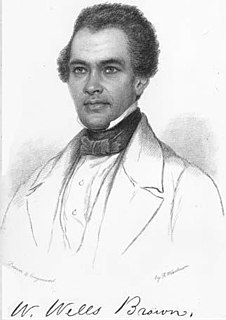 W
WWilliam Wells Brown was a prominent African-American abolitionist lecturer, novelist, playwright, and historian in the United States. Born into slavery in Montgomery County, Kentucky, near the town of Mount Sterling, Brown escaped to Ohio in 1834 at the age of 19. He settled in Boston, Massachusetts, where he worked for abolitionist causes and became a prolific writer. While working for abolition, Brown also supported causes including: temperance, women's suffrage, pacifism, prison reform, and an anti-tobacco movement. His novel Clotel (1853), considered the first novel written by an African American, was published in London, England, where he resided at the time; it was later published in the United States.
 W
WPeter Bruner was born a slave in Kentucky. He escaped enslavement to join the Union Army during the Civil War. After the war, he married and raised a family in Ohio. Collaborating with his daughter, he published his autobiography.
 W
WLovisa von Burghausen was a Swedish memoirist who became famous for her story about her time in captivity as a slave in Russia after being taken prisoner by the Russians during the Great Northern War. She was sold as a slave several times before she eventually recovered her freedom, and her story became perhaps the most famous of the many stories of Carolinian fates of this period.
 W
WLewis Garrard Clarke was an ex-slave who published his experiences in his work, Narrative of the Sufferings of Lewis Clarke.
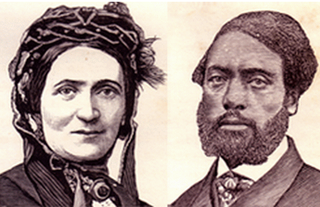 W
WEllen Craft (1826–1891) and William Craft were American fugitives who were born and enslaved in Macon, Georgia. They escaped to the North in December 1848 by traveling by train and steamboat, arriving in Philadelphia on Christmas Day. Ellen crossed the boundaries of race, class, gender and physical ability by passing as a white male planter with William posing as her personal servant. Their daring escape was widely publicized, making them among the most famous of fugitives from slavery. Abolitionists featured them in public lectures to gain support in the struggle to end the institution.
 W
WLucy Ann Delaney, born Lucy Berry, was an African-American author, and activist, a former slave notable for her 1891 narrative From the Darkness Cometh the Light, or, Struggles for Freedom. This is the only first-person account of a "freedom suit" and one of the few slave narratives published in the post-Emancipation period.
 W
WAyuba Suleiman Diallo (1701–1773), also known as Job Ben Solomon, was a prominent Muslim and slave who was transported to the Americas during the Atlantic slave trade. Born in Bundu, Senegal, Ayuba's memoirs were published as one of the earliest slave narratives, that is, a first-person account of the slave trade, in Thomas Bluett's Some Memories of the Life of Job, the Son of the Solomon High Priest of Boonda in Africa; Who was enslaved about two Years in Maryland; and afterwards being brought to England, was set free, and sent to his native Land in the Year 1734. However, this version is not a first-person account. A first hand account of Ayuba's capture by Mandinkas and eventual return home can be found in Francis Moore's Travels into the Interior Parts of Africa.
 W
WThe Reverend Jordan Winston Early was an American Methodist African American preacher, considered to have been one of the pioneers of African Methodism in the West and South of the United States. In 1868, he married Sarah Jane Woodson Early, and the couple were prominent in spreading Methodism and black nationalism, and his wife taught wherever he preached.
 W
WSarah Jane Woodson Early, born Sarah Jane Woodson, was an American educator, black nationalist, temperance activist and author. A graduate of Oberlin College, where she majored in classics, she was hired at Wilberforce University in 1858 as the first black woman college instructor and she was the first black American to teach at a historically black college or university (HBCU).
 W
WAli Eisami Gazirmabe of Bornu, later known as William Harding, was a Kanuri man liberated from slavery by the British Royal Navy. Afterwards, he lived in Sierra Leone and worked with the German missionary Sigismund Koelle in creating a Kanuri grammar. In addition, Koelle recorded Eisami's stories of his life, composing a short memoir of his enslavement; Koelle refers to the Kanuri man as "Ali Eisami Gazirma", that is, Ali, whose mother was Eisa, from Gazir.
 W
WOlaudah Equiano, known for most of his life as Gustavus Vassa, was a writer and abolitionist from, according to his memoir, the Eboe region of the Kingdom of Benin. Enslaved as a child in Africa, he was taken to the Caribbean and sold as a slave to a Royal Navy officer. He was sold twice more but purchased his freedom in 1766.
 W
WPeter Fossett was an enslaved laborer at Monticello, Thomas Jefferson's plantation, who after he attained his freedom in the mid-1800s, settled in Cincinnati where he established himself as a minister and caterer. He was a captain in the Black Brigade of Cincinnati during the Civil War. Fossett was an activist for education and prison reform. He was a conductor on the Underground Railroad. His remembrances, Once the slave of Thomas Jefferson, were published in 1898.
 W
WDavid George was an African-American Baptist preacher and a Black Loyalist from the American South who escaped to British lines in Savannah, Georgia; later he accepted transport to Nova Scotia and land there. He eventually resettled in Freetown, Sierra Leone. With other slaves, George founded the Silver Bluff Baptist Church in South Carolina in 1775, the first black congregation in the present-day United States. He was later affiliated with the First African Baptist Church of Savannah, Georgia. After migration, he founded Baptist congregations in Nova Scotia and Freetown, Sierra Leone. George wrote an account of his life that is one of the most important early slave narratives.
 W
WMoses Grandy, was an African-American author, abolitionist, and, for more than the first four decades of his life, an enslaved person. At eight years of age he became the property of his white playmate, James Grandy, and two years later he was hired out for work. The monies Moses earned were collected and held until James Grandy turned 21. Moses helped build the Great Dismal Swamp Canal and learned how to navigate boats. It was that skill that led him to be made commander of several boats that traveled the canal and Pasquotank River, transporting merchandise from Elizabeth City, North Carolina, to Norfolk, Virginia. The position allowed him to be better fed, shod, and dressed. Able to keep a portion of his earnings, Moses arranged to buy his freedom twice and twice his owners kept the money and held him in slavery. An arrangement was made for an honorable man to buy him and Grandy earned the money to buy his freedom a third time, this time successfully.
 W
WGuðríður Símonardóttir was an Icelandic woman who was one of 242 people abducted from the Westman Islands, Iceland in 1627 in a raid by Barbary pirates. These raids came to be known as the Turkish abductions. After being held as a slave and concubine for nearly a decade, she was one of a few captives ransomed by the Danish king. She returned to Iceland, marrying the young theology student Hallgrímur Pétursson, who became known for his poetry and hymns.
 W
WFountain Hughes was an American former slave freed in 1865 after the American Civil War. Born in Charlottesville, Virginia, he worked as a laborer for most of his life, moving in 1881 from Virginia to Baltimore, Maryland. He was interviewed in June 1949 about his life by the Library of Congress as part of the Federal Writers' Project of former slaves' oral histories. The recorded interview is online through the Library of Congress and the World Digital Library.
 W
WHarriet Jacobs was an African-American writer. Born into slavery in Edenton, North Carolina, she was sexually harassed by her enslaver. When he threatened to sell her children if she did not submit to his desire, she hid in a tiny crawlspace under the roof of her grandmother's house, so low she could not stand up in it. After staying there for seven years, she finally managed to escape to the free North, where she was reunited with her children Joseph and Louisa Matilda and her brother John S. Jacobs. She found work as a nanny for the children of Nathaniel Parker Willis and got into contact with abolitionist and feminist reformers. Even in New York, her freedom was in danger until Mrs. Willis was able to pay off her legal owner. Her autobiography, Incidents in the Life of a Slave Girl, published in 1861, is now considered an "American classic".
 W
WJohn S. Jacobs was an African-American author and abolitionist. After escaping from slavery he published his autobiography entitled A True Tale of Slavery in the four consecutive editions of the London weekly The Leisure Hour in February 1861. He also features prominently in the classic Incidents in the Life of a Slave Girl, authored by his sister Harriet Jacobs.
 W
WElizabeth Hobbs Keckley was a former slave who became a successful seamstress, civil activist, and author in Washington, DC. She was best known as the personal modiste and confidante of Mary Todd Lincoln, the First Lady.
 W
WPetro Kilekwa was an African man who, after having been enslaved, became a teacher and later an Anglican priest. His autobiography, published in 1937, was titled Slave Boy to Priest: The Autobiography of Padre Petro Kilekwa.
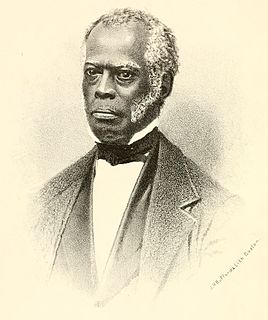 W
WLunsford Lane was a formerly enslaved African-American entrepreneur from North Carolina who bought freedom for himself and his family. He became a vocal opponent of slavery and wrote a slave narrative autobiography. His life and narrative shows the plight of slavery, even for the relatively privileged slaves.
 W
WRev. Jermain Wesley Loguen, born Jarm Logue, in slavery, was an African-American abolitionist and bishop of the African Methodist Episcopal Zion Church, and an author of a slave narrative.
 W
WSolomon Northup was an American abolitionist and the primary author of the memoir Twelve Years a Slave. A free-born African American from New York, he was the son of a freed slave and a free woman of color. A farmer and a professional violinist, Northup had been a landowner in Hebron, New York. In 1841, he was offered a traveling musician's job and went to Washington, D.C. ; there he was drugged, kidnapped, and sold as a slave. He was shipped to New Orleans, purchased by a planter, and held as a slave for 12 years in the Red River region of Louisiana, mostly in Avoyelles Parish. He remained a slave until he met a Canadian working on his plantation who helped get word to New York, where state law provided aid to free New York citizens who had been kidnapped and sold into slavery. His family and friends enlisted the aid of the Governor of New York, Washington Hunt, and Northup regained his freedom on January 3, 1853.
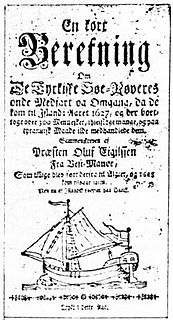 W
WÓlafur Egilsson was an Icelandic Lutheran minister. In 1627, he was abducted, along with his wife and two sons, by Barbary Pirates under the Ottoman Empire during their raid on Vestmannaeyjar. The raid is known in Icelandic history as Tyrkjaránið. He returned to Vestmannaeyjar in 1628 but his wife Ásta Þorsteinsdóttir did not return until 1637 and his sons never returned. He later wrote a memoir of his abduction and return, which was published both in Iceland and in Denmark.
 W
WHark Olufs was a North Frisian sailor. He was captured by Algerian pirates and sold into slavery. By successfully working as a slave servant to the Bey of Constantine, he eventually obtained his freedom from captivity.
 W
WOsifekunde of Ijebu was an Ijebu man whose documented narrative, as a victim of The Trans Atlantic Slave Trade, serves as one of the earliest Western records of Yoruba land.
 W
WJohn P. Parker was an American abolitionist, inventor, iron moulder and industrialist. Parker, who was African American, helped hundreds of slaves to freedom in the Underground Railroad resistance movement based in Ripley, Ohio. He saved and rescued fugitive slaves for nearly fifteen years. He was one of the few black people to patent an invention before 1900. His house in Ripley has been designated a National Historic Landmark and restored.
 W
WThomas Pellow, son of Thomas Pellow of Penryn and his wife Elizabeth, was a Cornish author best known for the extensive captivity narrative entitled The History of the Long Captivity and Adventures of Thomas Pellow in South-Barbary. Pellow's chronicles his many adventures spent during his 23-year-long captivity giving a detailed account of his capture by Barbary pirates, his experiences as a slave under Sultan Moulay Ismail, and his final escape from Morocco back to his Cornish origins.
 W
WJames William Charles Pennington was an African-American orator, minister, writer, and abolitionist active in Brooklyn, New York. He escaped at the age of 19 from slavery in western Maryland and reached New York. After working in Brooklyn and gaining some education, he was admitted to Yale University as its first black student. He completed studies and was ordained as a minister in the Congregational Church, later also serving in Presbyterian churches for congregations in Hartford, Connecticut; and New York. After the Civil War, he served congregations in Natchez, Mississippi; Portland, Maine; and Jacksonville, Florida.
 W
WMary Prince was a British abolitionist and autobiographer, born in Bermuda to an enslaved family of African descent. Subsequent to her escape, when she was living in London, England, she and Thomas Pringle wrote her slave narrative The History of Mary Prince (1831), which was the first account of the life of a black woman to be published in the United Kingdom. This first-hand description of the brutalities of enslavement, released at a time when slavery was still legal in Bermuda and British Caribbean colonies, had a galvanising effect on the anti-slavery movement. It was reprinted twice in its first year.
 W
WMoses Roper was a radical Black abolitionist, author, orator and survivor of U.S. slavery. He wrote one of the first graphic accounts of slavery in his Narrative of the Adventures and Escape of Moses Roper from American Slavery and gave thousands of lectures around Britain and Ireland to inform the transatlantic public about slavery's brutalities.
 W
WBrigitta Christina Scherzenfeldt, as married Bernow, Lindström, Ziems, and Renat, was a Swedish memoirist and weaving teacher who was captured during the Great Northern War and lived as a slave over 15 years in the Dzungar Khanate in Central Asia. She dictated her memoirs, describing her life as a slave, after her release. Her story is regarded as a unique source of information about life among the Dzungars.
 W
WVenture Smith was captured when he was six and a half years old in West Africa and was taken to Anomabo on the Gold Coast to be sold as a slave. As an adult in Rhode Island (Connecticut), he purchased his freedom and that of his family. He documented his life in A Narrative of the Life and Adventures of Venture, a Native of Africa: But Resident above Sixty Years in the United States of America, Related by Himself. This autobiography is one of the earliest known examples of an autobiographical narrative in an entirely African American literary vericas, only about a dozen left behind first-hand accounts of their experiences.
 W
WPierre Toussaint was a Haitian-American hairdresser, philanthropist, and former slave brought to New York City by his owners in 1787. Freed in 1807 after the death of his mistress, Pierre took the surname of "Toussaint" in honor of the hero of the Haitian Revolution which established that nation. In 1996, he was declared "Venerable" by Pope John Paul II.
 W
WBethany Johnson Veney, born into slavery in Shenandoah County, Virginia, is best remembered in historical studies for her autobiography, Aunt Betty's Story: The Narrative of Bethany Veney, A Slave Woman (1889).
 W
WSamuel Ringgold Ward was an African American who escaped enslavement to become an abolitionist, newspaper editor, labor leader, and Congregational minister.
 W
WJames Watkins, was an African-American author, abolitionist, activist and survivor of U.S. slavery.
 W
WZamba Zembola is the supposed author of an 1847 slave narrative, The Life and Adventures of Zamba, an African Negro King; and his Experience of Slavery in South Carolina, which describes his kidnapping and 40 years of labor as a slave on a plantation in the U.S. state of South Carolina. The work was edited by Peter Neilson, a Scottish abolitionist.